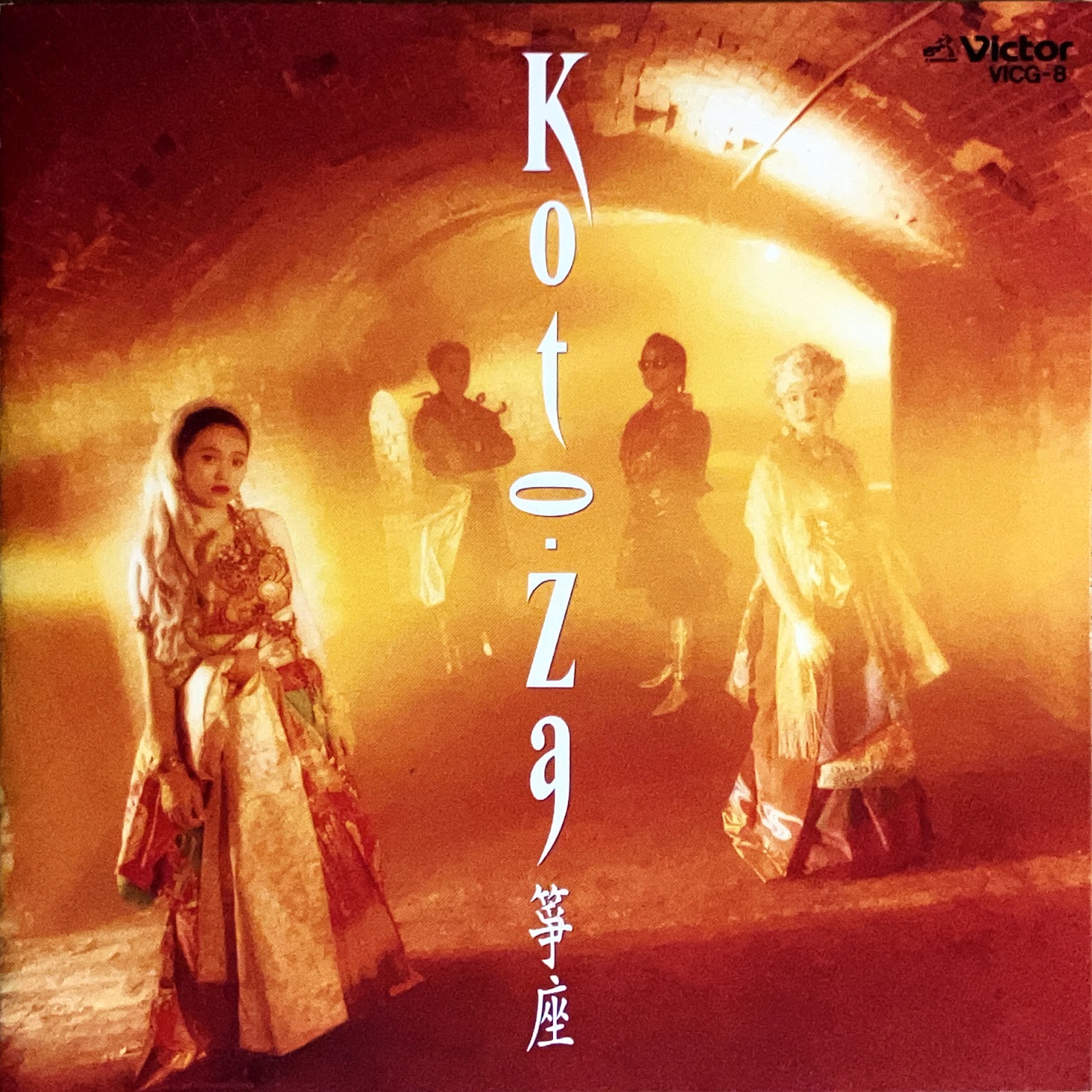There’s nothing like youthful naivete is there? I fully believe it’s that ingrained spirit to want to shake things up and light your own path that forces the spirits of the past to look forward to the future. It’s that kind of spirit you hear positively soaring in the unclassifiable music of Koto-Za and their self-titled debut.
As you can correctly surmise from their name, Koto-Za is a band that revolves around that most-iconic of Japanese instruments: the koto. A gorgeous steel-strung instrument of Chinese lineage, whether in the 13 or 17-string variety, true koto masters can make this zither sound like a whole ensemble, on something that fits quite nicely on any old table. And as with many “traditional” instruments, those that gravitate to its study tend to do so out of a deep reverence for its past, and sadly, never seem to move out of the way of its history. Thankfully, for us, the members of Koto-Za weren’t such a group.

Koto-Za’s creation began not locked inside some conservatory but outside of Tokyo University of the Arts Graduate School’s Japanese traditional music department. It was in 1987 when original members Atsuko Kida, Nobuko Baba, and Gazan Watanabe, held their first concert at a Tokyo Univ. festival dubbed, “Geijutsuka”.
Back then this group called “Lyra” felt too beholden to their classical training. Hailing from parts outside of Tokyo, Atsuko from Hokkaido, Nokubo from Yokohama, and Gazan from Nagoya, had felt an affinity for knowing their chosen instruments – koto and shakuhachi – inside out but also realized that world around them was changing and becoming more interconnected, for the better. In that hub of Tokyo culture, Harajuku, which they’d frequent, innovative music that blended in the global influence of places from Africa to South America, fed their belief that music had no boundaries.
With time, as Lyra grew too tied to their traditional teaching and began to roll-in elements of noh, they immediately saw them heading in the wrong direction and rebelled against themselves, to label them as traditionalists playing “classical” music felt anathema to their beliefs, as they’d state: “We want to create original music, plain and simple. First and foremost, we want to enjoy it ourselves. If our music were to become popular in the future or remain a well-kept secret, we would be happy with either. It’s not the ultimate goal.”

That hunger for creativity and not just success led them to change their name to Koto-Za and invite Okinawan keyboardist, Kazunori Miyake, to join and contribute to the band. It was Kazunori’s entrance that proved pivotal to their shift. It was he who had a solid foundation in pop and rock music. It was Kazunori, who as a sometimes taishōgoto player, brought a freer notion of their music and a certain edge. So, in 1990, at the Roppongi Pit Inn, Koto-Za formally debuted, finally playing original music they actually loved to play. Playing music more tied to the contemporary world, it sounded like little else out there.
On their 1991 self-titled debut, you see them mutate and reimagine their traditional roots in both music and image, creating a statement album carving out their own niche in some kind of new Japanese avant-pop or neofolk movement. In their album you’d find them wearing outfits, seemingly, designed for some futuristic matsuri festival. On their record you’d find them play muscular, floating, electronically-tinged tracks like “Lethe”, casting a sprawling net where the koto would serve as this lure bridging the gap between a certain Japanese past and a more unpredictable, forward-thinking future.
Tracks like “街角でひろった午後” find the meeting point between jazz, funk, and their fourth world-esque world music. Ideas from South Asia make their sterling announcement on tracks like “遠い坂道” mixing Indian percussion with their pastoral koto-led melodies. Impressive koto workouts like “祝宴(組曲「竹取物語」より)” and “昇天(組曲「竹取物語」より)” become these complex ensemble songs where Koto-Za was able to stretch out their considerable technical talents.
Then, just as soon as you think they’re remaining in a certain lane, Koto-Za switch gears and use mostly modern instruments, like they would on “東方見聞録” to explore the musical ties of those along the “Silk Road”. On other tracks like “Intermission” the shakuhachi and multi-layered kotos create this impressive atmosphere that’s entirely of a different orientation, one that segues perfectly into a groovy, latin rhythm that touches on their love of South American music.

When the album ends on the nostalgic “燭光II” it feels less like an elegy for a certain history but a strand connecting it forever more to something more vibrant, something more livid, that you can’t learn from books. It’s the idea that many strings can come together, crosshatching a fuller tapestry.
